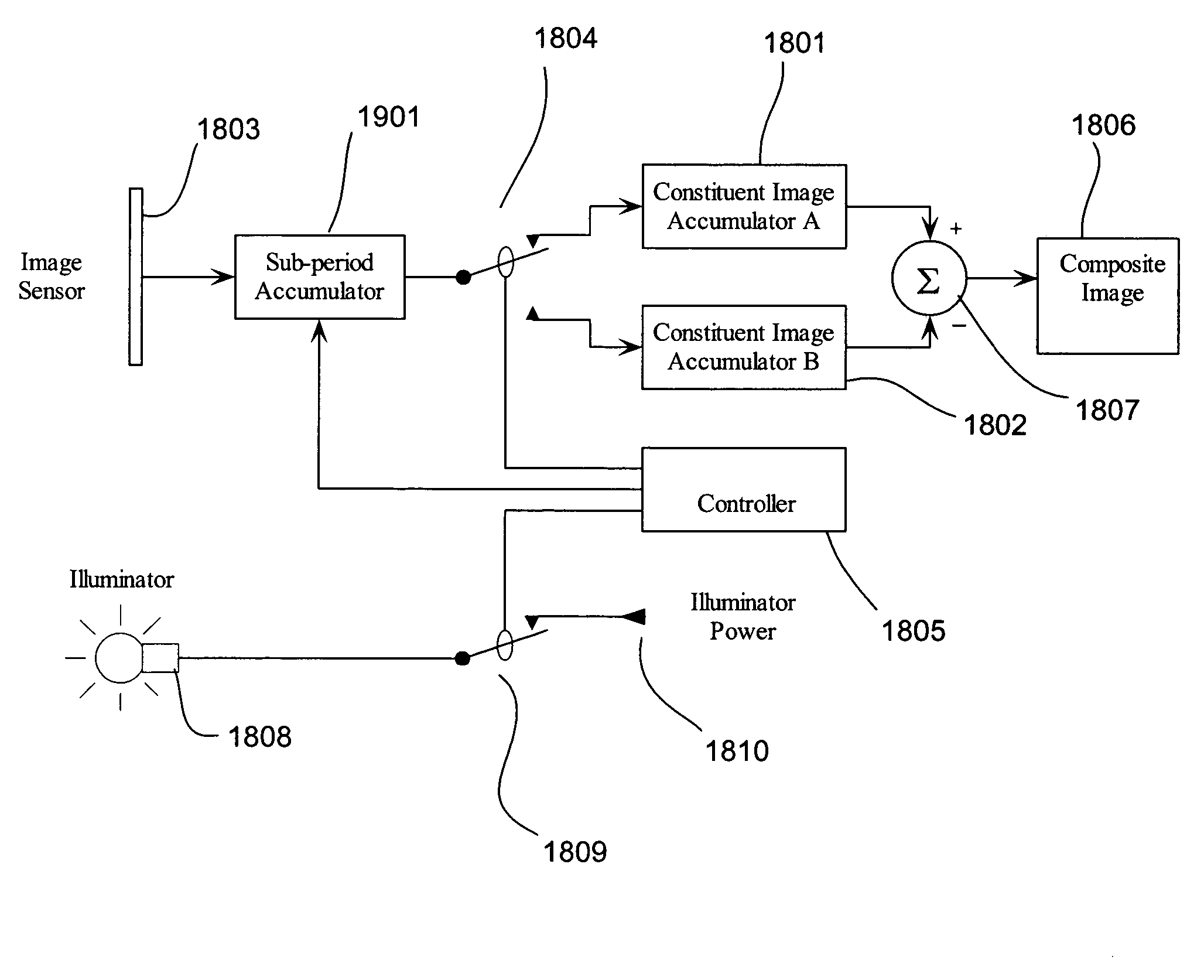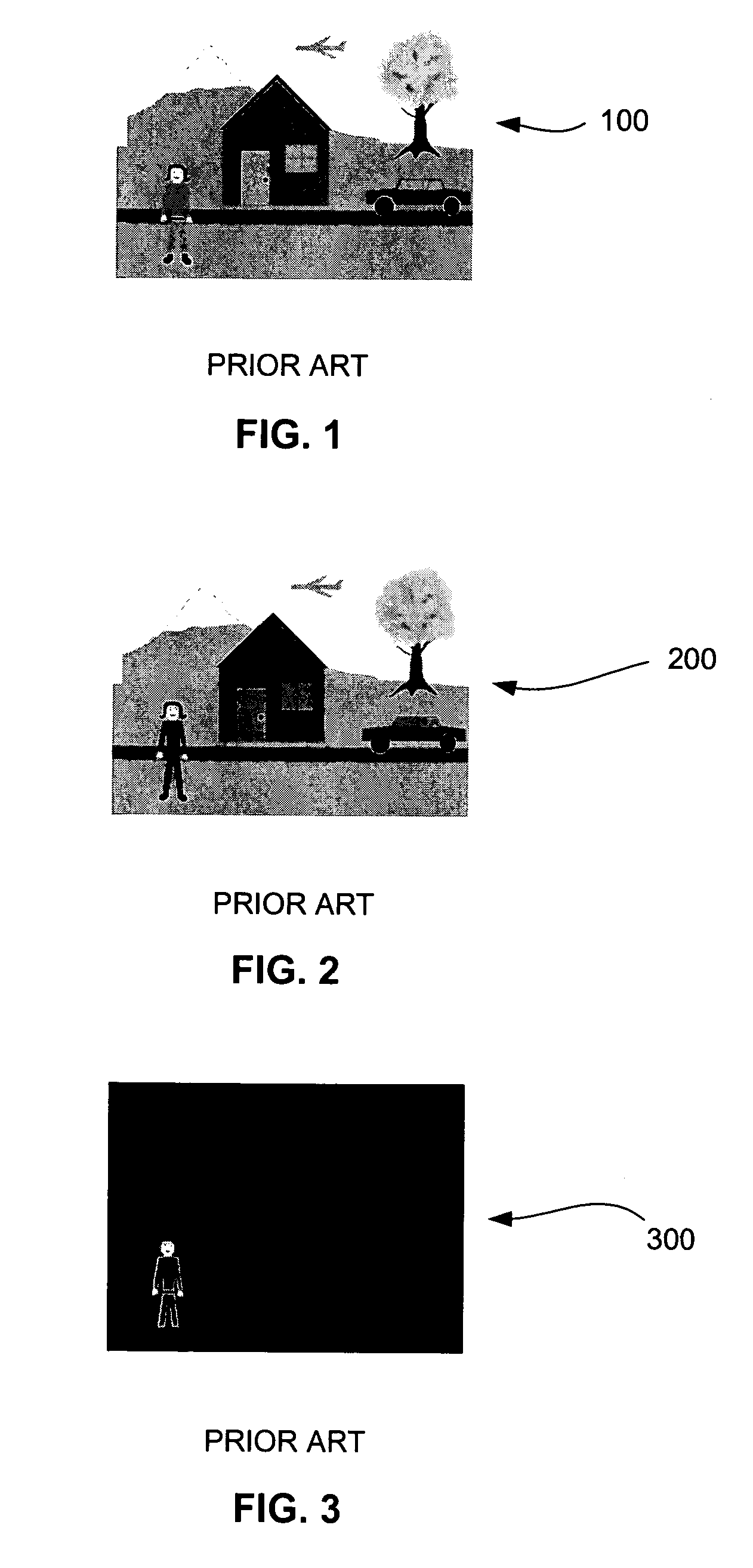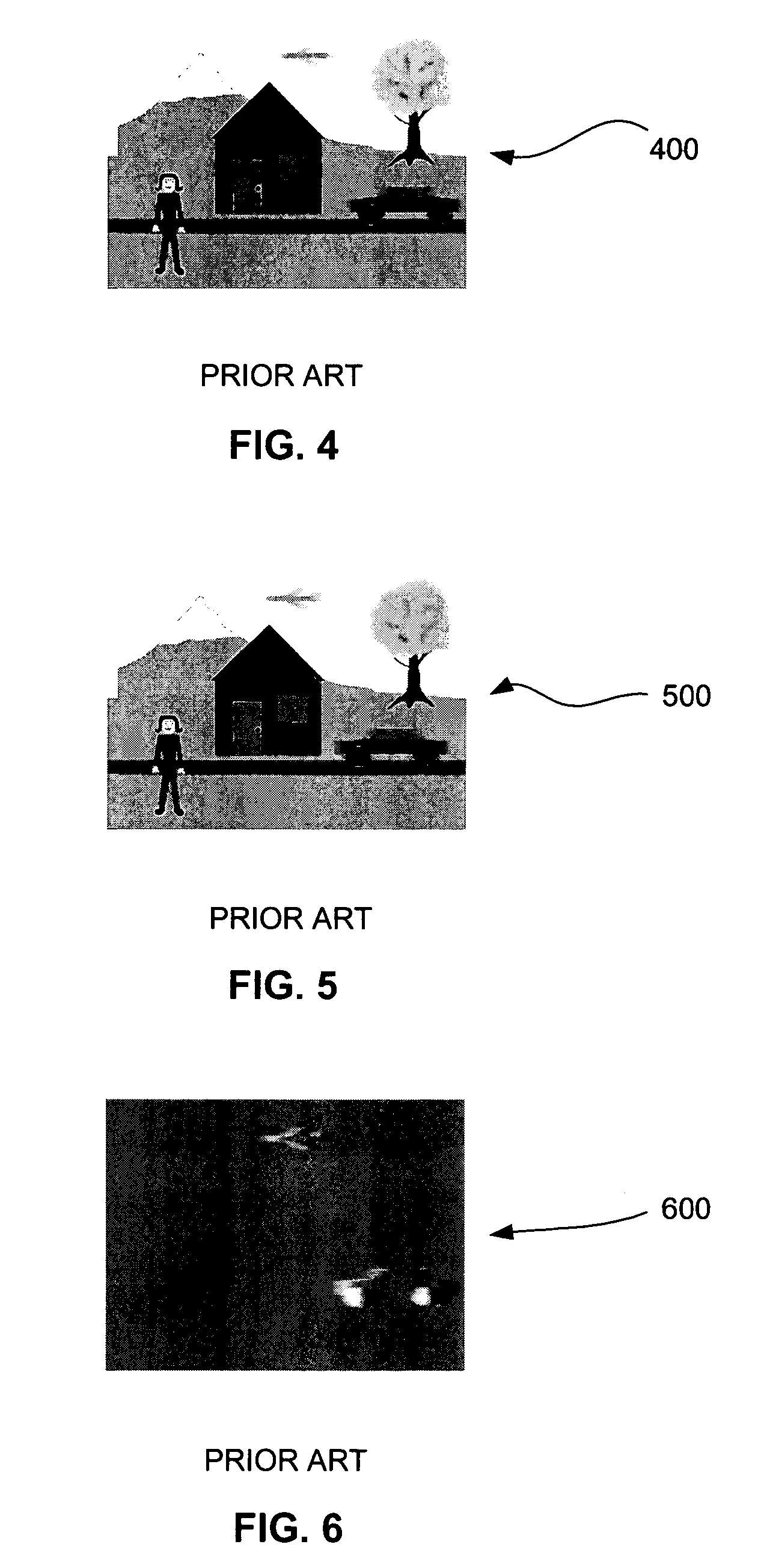Motion clutter suppression for image-subtracting cameras
a technology of image-subtraction and motion suppression, applied in the field of image processing, can solve the problems of reducing the total light available to generate quality images, reducing the image shutter time t, etc., and achieve the effect of facilitating eyetracking applications
- Summary
- Abstract
- Description
- Claims
- Application Information
AI Technical Summary
Benefits of technology
Problems solved by technology
Method used
Image
Examples
Embodiment Construction
Minimization of Motion Clutter
[0072]According to an embodiment of the present invention, a system to minimize the magnitude of motion clutter in dynamic camera scenes is described. In order to minimize this motion clutter, it is necessary to minimize the motion clutter width Δx, which, as a consequence of Eq 1, means that is it is necessary to minimize the inter-image offset time Δt. If a single pair of images is used in the image subtraction, however, reducing the inter-image offset time results in an equal reduction of image shutter time Δt, which in turn reduces the total light available to generate quality images. To maintain long net frame illumination periods while simultaneously decreasing Δt, and thus minimizing motion clutter, the collection of A and B images are interleaved temporally within the overall frame exposure period.
[0073]FIG. 11 illustrates temporally interleaved frame-capture timing for image-subtraction using multiple, sequential pairs of A-type sub-periods 111...
PUM
 Login to View More
Login to View More Abstract
Description
Claims
Application Information
 Login to View More
Login to View More - R&D
- Intellectual Property
- Life Sciences
- Materials
- Tech Scout
- Unparalleled Data Quality
- Higher Quality Content
- 60% Fewer Hallucinations
Browse by: Latest US Patents, China's latest patents, Technical Efficacy Thesaurus, Application Domain, Technology Topic, Popular Technical Reports.
© 2025 PatSnap. All rights reserved.Legal|Privacy policy|Modern Slavery Act Transparency Statement|Sitemap|About US| Contact US: help@patsnap.com



